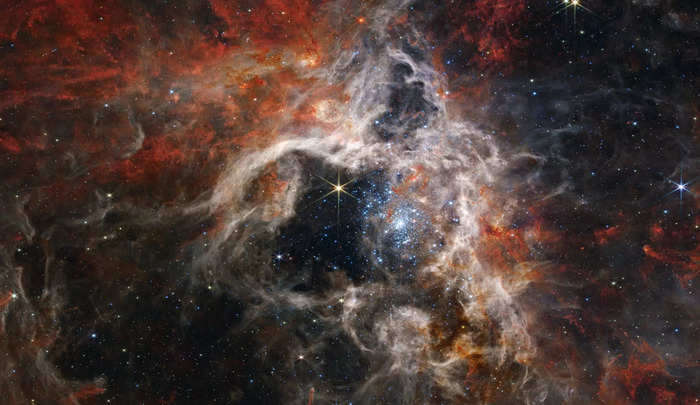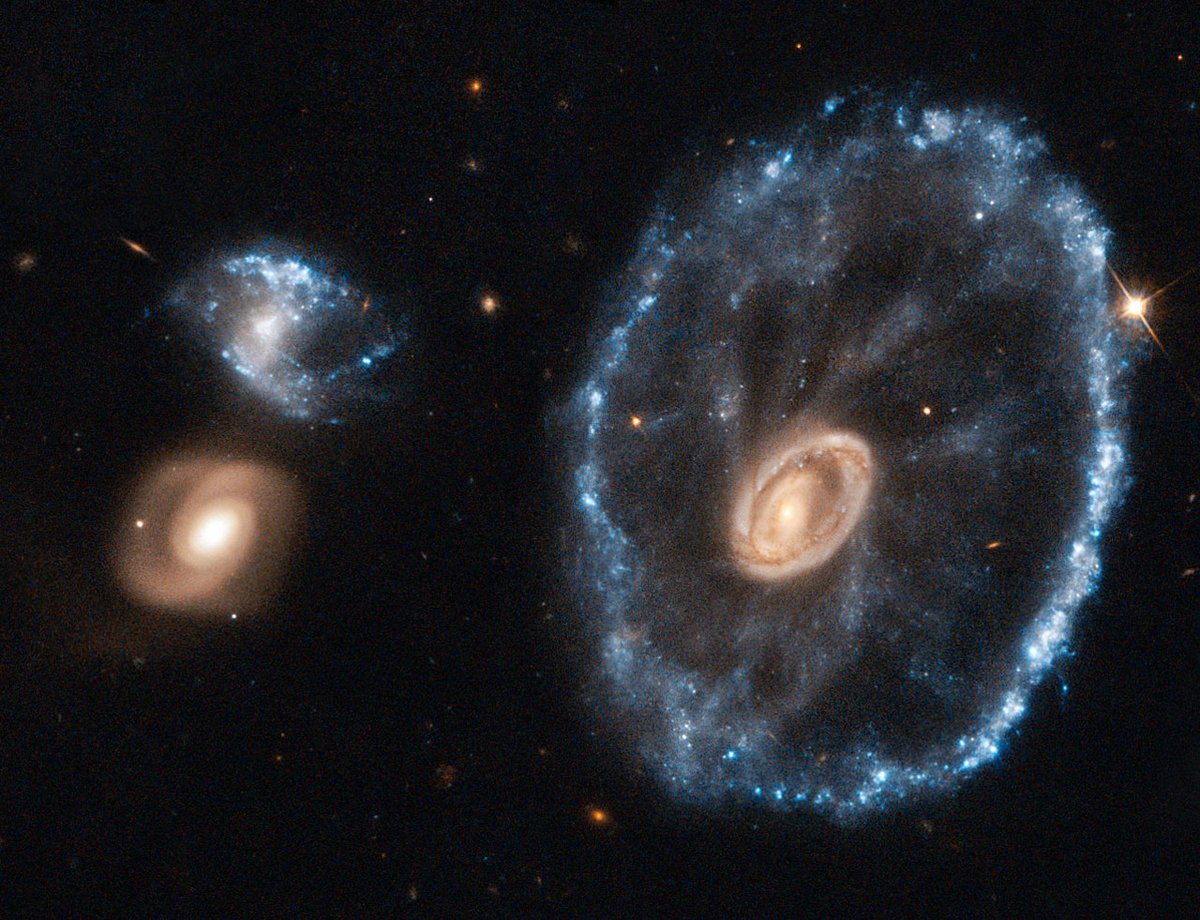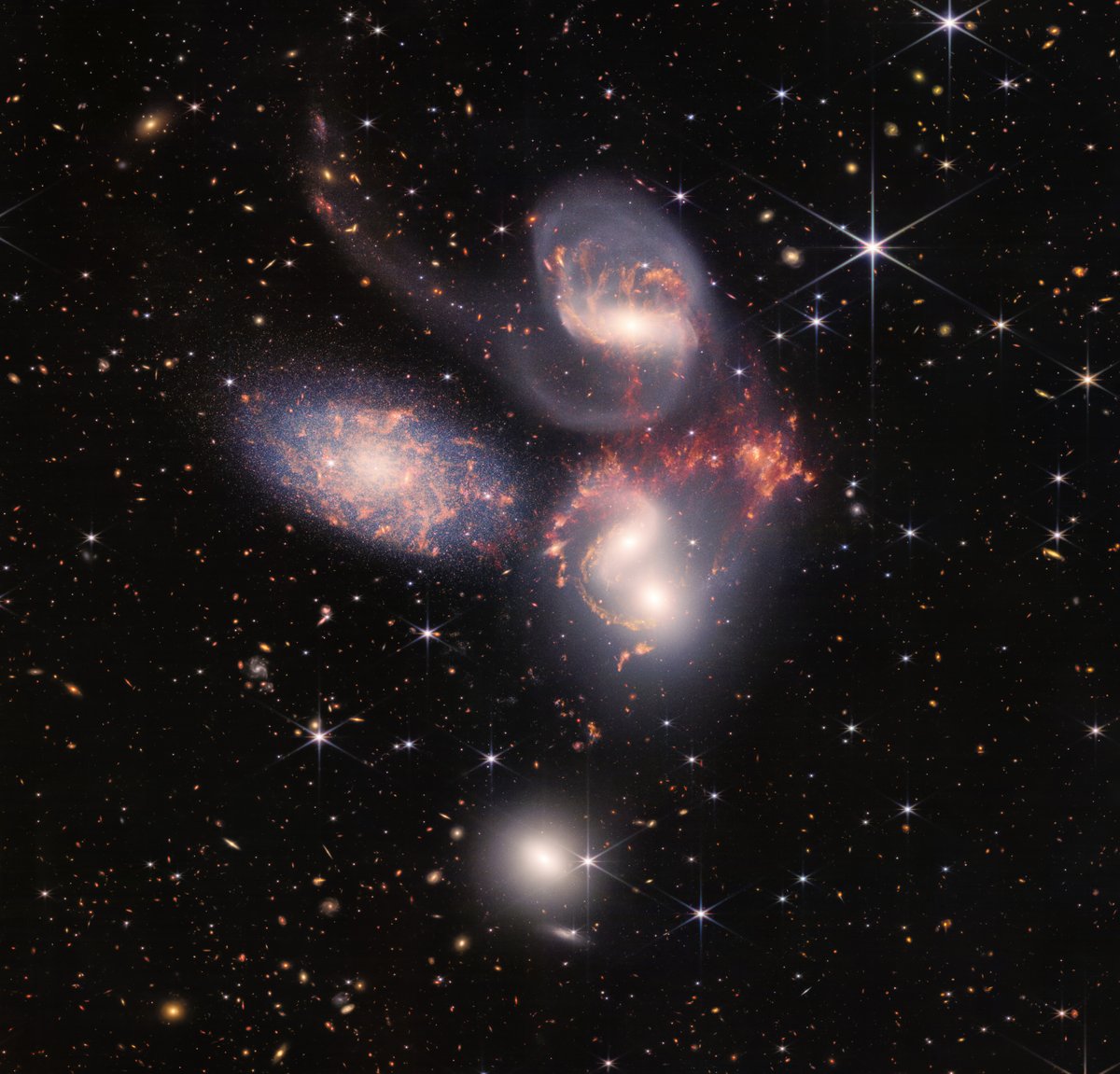Discover and read the best of Twitter Threads about #webb
Most recents (24)
Sir, please note and respect: no lies were repeated. Questions were asked.
You gave answers which were not asked, and it seems you assert accusations which were not made. At the same time questions remain open, amongst other things, regarding Ivermectin. Please address.
You gave answers which were not asked, and it seems you assert accusations which were not made. At the same time questions remain open, amongst other things, regarding Ivermectin. Please address.
You speak of liars. Is it @RealGeorgeWebb1 you are referring to? As far as I can see he did not accuse you, but ask you. And in the meantime he filed claims in a court. Justice will be served. I am hopeful.
.@RealGeorgeWebb1 started to question you for your enthusiastic endorsement of the #JordonWalker stinging operation which you called “great journalism”, even though many questions were flying in everybody’s face about Mr Walker’s past as #BCG consultant rather than executive.
Un exoplaneta al que han apodado Tierra 2.0 y cuyo nombre es Kepler-452b, presenta una serie de características conjeturadas que lo hacen muy similar al nuestro. Se trata de una "Super Tierra" con un diámetro +/- 1,5 veces mayor que nuestro planeta1/7
📸 Wikipedia Commons
📸 Wikipedia Commons

#JamesWebbSpaceTelescope's new photo of the Tarantula Nebula caught thousands of never-before-seen baby stars
#NASAWebb
businessinsider.in/science/news/w…
#NASAWebb
businessinsider.in/science/news/w…

Astronomers focused the #JamesWebbSpaceTelescope on Tarantula Nebula, one of the brightest and most active star-forming regions in our galactic backyard, and found thousands of young stars they hadn't seen before, images released by NASA on Tuesday show.
webbtelescope.org/contents/news-…
webbtelescope.org/contents/news-…
The Tarantula Nebula, is an immense cloud of gas and dust about 160,000 light-years away in the Large Magellanic Cloud, a satellite galaxy of the #MilkyWay. The nebula has birthed some massive stars, a few that are more than 150 times the mass of our sun.
businessinsider.com/astronomers-sh…
businessinsider.com/astronomers-sh…
This detailed new image taken by #Webb peers into the chaos of the Cartwheel Galaxy 🛞 The image unveils secrets about star formation ✨ & the galaxy’s central black hole, providing new insights into a galaxy in the midst of a slow transformation 👇 

The Cartwheel Galaxy, located about 500 million light-years away in the Sculptor constellation, looks much like the wheel of a wagon. Its appearance results from a high-speed collision between a large spiral galaxy and a second smaller galaxy 👇
Telescopes like @HUBBLE_space have previously examined the Cartwheel, but our view of the galaxy has been obscured by gas and dust 😶🌫️ Webb, with its infrared imaging capabilities, has now uncovered new insights into the galaxy’s nature 👇 

What you see here is a transmission spectrum made from a single observation using Webb’s NIRISS instrument. Let's take a closer look at it 👇 

A transmission spectrum is made by comparing starlight filtered through a planet’s atmosphere as it moves across the star, to the unfiltered starlight detected when the planet is beside the star 👇
🔴 Each of the 141 data points (white circles) on this graph represents the amount of a specific wavelength of light that is blocked by the planet and absorbed by its atmosphere 👇
When your subconscious realizes the @NASA #Webb telescope captured the exact same area of space as the "It's a Wonderful Life" intro, you drop everything and make this happen. #ItsAWonderfulLife #OhDaddy #Webb
@NASA Here's the original!
📢 #Webb reveals cosmic cliffs & glittering landscape of star birth, showing us emerging stellar nurseries & individual stars that were previously obscured. This is the edge of nearby star-forming region NGC 3324 in the Carina Nebula. Read more here: esawebb.org/news/weic2205/ or👇 

Called the Cosmic Cliffs, Webb’s seemingly 3D picture looks like craggy mountains on a moonlit evening. In reality, it is the edge of the giant, gaseous cavity within NGC 3324, and the tallest “peaks” in this image are about 58 light-years high 👇 

The cavernous area has been carved from the nebula by the intense ultraviolet radiation and stellar winds from extremely massive, hot, young stars located in the centre of the bubble, above the area shown in the image 👇
📢 #Webb reveals never-before-seen details of galaxy group “Stephan’s Quintet”, giving astronomers a ringside seat to galactic mergers and interactions. Read more here: esawebb.org/news/weic2208/ or below 👇 

Stephan’s Quintet is a visual grouping of 5 galaxies with only 4 of the galaxies truly close together & caught up in a cosmic dance — a fantastic “laboratory” for scientists to see in detail how interacting galaxies trigger star formation & how gas is being disturbed 👇 

Tight groups like this may have been more common in the early universe when their infalling material may have fuelled very energetic black holes. Even today, the topmost galaxy harbours an active galactic nucleus, a supermassive black hole 24 million times the mass of the Sun 👇
📢#Webb reveals details of the Southern Ring planetary nebula that were previously hidden, helping us better understand how stars evolve and transform their environments. Read more here: esawebb.org/news/weic2207/ or below 👇#WebbSeesFarther 

Some stars save the best for last 💥 Planetary nebulae are the shells of gas and dust ejected from dying stars — making for a spectacular view. Since they exist for tens of thousands of years, observing such a nebula is like watching a movie in exceptionally slow motion 👇
Two stars, which are locked together in a tight orbit, shape the local landscape of this planetary nebula. Webb's infrared images feature new details in this complex system 👇
📢 #Webb reveals steamy atmosphere ♨️ of exoplanet WASP-96 b, capturing the distinct signature of water 💧 along with evidence for clouds & haze — the most detailed measurements of this kind to date. Read more here: esawebb.org/news/weic2206/ or below 👇 #WebbSeesFarther 

WASP-96 b is a hot, puffy gas giant planet orbiting a distant Sun-like star. On 21 June, Webb’s #NIRISS measured light from the WASP-96 system for 6.4 hours as the planet moved across the star 👇
📢 #Webb delivers deepest image of the Universe yet, looking far back in time when the Universe was less than a billion years old. The image is about the size of a grain of sand held at arm’s length, yet it reveals thousands of galaxies. Read more esawebb.org/news/weic2209/ or 👇 

This is Webb’s First Deep Field, the deepest, sharpest infrared image of the distant Universe so far. It shows galaxy cluster SMACS 0723 as it appeared 4.6 billion years ago, with many more galaxies in front of and behind the cluster 👇
The combined mass of this galaxy cluster acts as a gravitational lens 🔎 magnifying more distant galaxies, including some seen when the Universe was less than a billion years old 👇
This is the stunning first full-colour science image from the James #Webb Space Telescope
Presented by US president Joe Biden today, the @NASAWebb image is our deepest and highest-resolution look at the universe yet #UnfoldTheUniverse
newscientist.com/article/232813…
Presented by US president Joe Biden today, the @NASAWebb image is our deepest and highest-resolution look at the universe yet #UnfoldTheUniverse
newscientist.com/article/232813…

“Webb’s First Deep Field”, as the image is known, shows a region of space called SMACS 0723, which contains what’s called a gravitational lens
This is when a massive and relatively nearby object acts like a magnifying glass - boosting the light of background objects
This is when a massive and relatively nearby object acts like a magnifying glass - boosting the light of background objects
The gravitational lens in SMACS 0723 is particularly strong because the nearby object is a large cluster of galaxies
The small specks and streaks of light visible around the edges of the image are distant, incredibly faint galaxies – some of the first that ever formed
The small specks and streaks of light visible around the edges of the image are distant, incredibly faint galaxies – some of the first that ever formed
Cuán grande es el universo? Sabías que a principios del siglo XX se suponía que era alrededor de 100K años luz de largo? Y hoy? ⤵️ 

Hoy se estima en 13.8 mil millones de años luz de radio! Una esfera de 46B! Hemos aprendido la verdadera escala de nuestro lugar en el universo, en sólo los últimos 100 años... ⤵️
🧵¡Ya se vienen! Fata poco para las primeras imágenes de calidad científica del Telescopio Espacial James #Webb 😍¿Qué magníficos objetos estamos por observar? ¡Prepárate para armar tu galería! Aquí te los muestro. (1/16) 

La @NASA ha anunciado el calendario y la lista de objetos estelares que marcarán el inicio de las operaciones científicas del Webb🔭. La cita es el próximo martes, 12 de Julio a las 10:30 am (EDT), con transmisión en vivo para mostrarnos las primeras increíbles imágenes. (2/16)
In 2 days 23 hrs and less than 50 minutes #NASA will launch officially the science mission of #WEBB, next July 12th at 1430 CEST jwst.nasa.gov/content/webbLa…
In that day they will present live the first official science photos captured by #WEBB #UnfoldTheUniverse nasa.gov/feature/goddar…
Carina Nebula, The Carina Nebula is one of the largest and brightest nebulae in the sky, located approximately 7,600 light-years away in the southern constellation Carina. This is the amazing view from #Hubble hubblesite.org/contents/media… 

今天pass项目2,@carv_official #carv $arc
其实吸引我的是这张图,让我情不自禁想起了虫子项目 #webb
还有之前带社区成员做了个sol链上的nft项目,mint价格2sol,很快就涨了20多(适当吹吹),那时候sol价格100以上
但这个项目并不是做游戏的,而是偏向游戏的DID,对标 #projectgalaxy 差不多

其实吸引我的是这张图,让我情不自禁想起了虫子项目 #webb
还有之前带社区成员做了个sol链上的nft项目,mint价格2sol,很快就涨了20多(适当吹吹),那时候sol价格100以上
但这个项目并不是做游戏的,而是偏向游戏的DID,对标 #projectgalaxy 差不多


现在说说项目
1)项目立意应该是在链游井喷,公会爆发的时期,那时候大家觉得链游yyds,永远牛逼
于是 carv就做了一个以钱包作为基础,收集各种玩家的数据,做成徽章和数据集成的协议
对玩家来说,对标王者荣耀个人面板的东西,一来比较酷炫,二来能够吸引潜在投资人和老板
1)项目立意应该是在链游井喷,公会爆发的时期,那时候大家觉得链游yyds,永远牛逼
于是 carv就做了一个以钱包作为基础,收集各种玩家的数据,做成徽章和数据集成的协议
对玩家来说,对标王者荣耀个人面板的东西,一来比较酷炫,二来能够吸引潜在投资人和老板
2)
对公会来说,他们也希望找到更多,游戏水平高,却比较穷的小伙子,培养培养,去打竞标赛不香吗?比如竞技类的 $thg ,甚至 @mobox 吧(其实还是忽悠玩家的)
对公会来说,他们也希望找到更多,游戏水平高,却比较穷的小伙子,培养培养,去打竞标赛不香吗?比如竞技类的 $thg ,甚至 @mobox 吧(其实还是忽悠玩家的)
Around May 24, JWST sustained a dust-sized micrometeroid impact to its primary mirror segment C3. Initial assessment shows that the telescope's performance remains above all mission requirements although there is a marginally detectable effect in its data.
1/
1/

The size of the micrometeroid and the physical nature of the damage are not clear from the report. JWST does not have cameras to observe such damage. The impact of the micrometeroid is judged based on its effect on image quality.
2/
2/
Breaking News 📣 #Hubble breaks new record detecting the most distant individual star ever seen. Nicknamed Earendel by the authors, this star existed within the first billion years after the Universe’s birth in the Big Bang 🎆
Full story: 🔗 esahubble.org/news/heic2203/
Thread 👇
Full story: 🔗 esahubble.org/news/heic2203/
Thread 👇

📌 The newly detected star is so far away that its light has taken 12.9 billion years to reach Earth, appearing to us as it did when the Universe was only 7% of its current age.
🗨️ "It’s like we’ve been reading a really interesting book, but we started with the 2nd chapter & now we will have a chance to see how it all got started,” said astronomer Brian Welch of the Johns Hopkins University in Baltimore, lead author of the paper
1/ 📢 This is an image mosaic of 18 randomly organised dots of starlight, the product of #Webb 's unaligned mirror segments all reflecting light from the same star back at Webb's secondary mirror and into #NIRCam's detectors. Thread 👇 with a surprise at the end! 



2/ The mosaic was created by pointing the telescope at a bright, isolated star in the constellation Ursa Major known as HD 84406, chosen specifically because it's easily identifiable and not crowded by other stars of similar brightness, which helps to reduce background confusion
Taking #Webb's temperature 🌡️ 5 new temperature monitoring points have been added to the NASA website to track cooling and status of the instruments during the post L2 arrival commissioning process. Let's have a look at them 👇
1/ Temperature control is a vital aspect of #Webb 's design, engineering and operations. On the page you can see 2 "hot side" and 2 "cold side" temperatures and a set of bellweather instrument temperatures
1/ The hexagonal shape enables a roughly circular, segmented mirror with "high filling factor and six-fold symmetry." High filling factor just means the segments fit together without gaps, which would not be the case if the segments were circular
As #Webb is going through the focusing of its mirrors, let's look into what this process entails. #WebbSeesFarther 👇
1/ #Webb's 18 hexagonal mirrors have already been unfolded a while back, but now it's time for a more precise alignment so they point in exactly the same direction 🎯 and deliver sharp images.
📷 NASA/Chris Gunn
📷 NASA/Chris Gunn

2/ These corrections are made through a process called 〰️ wavefront sensing and control, which senses and corrects any errors in the telescope's optics, aligning the mirrors to within tens of nanometres
1/ While we wait for news on L2 orbit insertion, we've got some facts for you on #Webb's orbit 👇
2/ Unlike @Hubble_Space #Webb will not be in orbit around the Earth, but will orbit the Sun, 1.5 million km away from the 🌍 at what is called the second Lagrange point or L2.
3/ This orbit lets the telescope stay in line with the Earth as it moves around the Sun. This allows the satellite's large sunshield to protect the telescope from the light and heat of the Sun, Earth and Moon.










